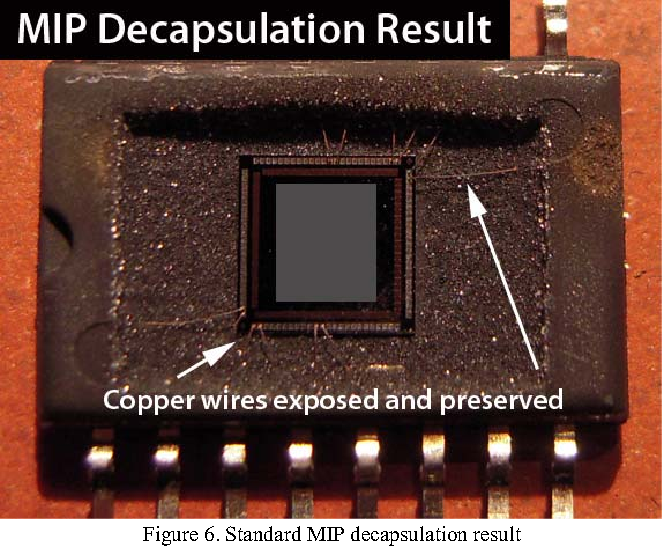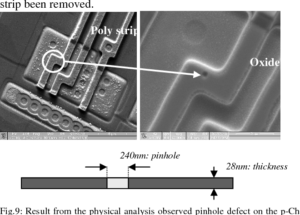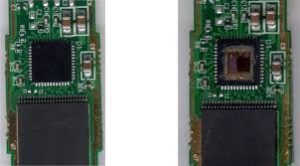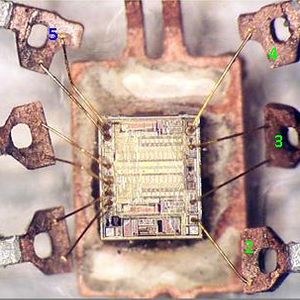Clone IC AT89C51RB2 Code
Clone IC AT89C51RB2 Code from flash and eeprom memory, disable the fuse bit of mcu by cracking its protection and readout firmware from embedded flash and eeprom of microcontroller at89c51rb2;

The AT89C51RB2/RC2 core needs only 6 clock periods per machine cycle. This feature
called ‘X2’ provides the following advantages:
Divide frequency crystals by 2 (cheaper crystals) while keeping same CPU power. Save power consumption while keeping same CPU power (oscillator power saving). Save power consumption by dividing dynamically the operating frequency by 2 in operating and idle modes.
Increase CPU power by 2 while keeping same crystal frequency. In order to keep the original C51 compatibility, a divider by 2 is inserted between the XTAL1 signal and the main clock input of the core (phase generator). This divider may be disabled by software if Crack microcontroller pic18f4221 program .
The clock for the whole circuit and peripherals is first divided by 2 before being used by the CPU core and the peripherals. This allows any cyclic ratio to be accepted on XTAL1 input. In X2 mode, as this divider is bypassed, the signals on XTAL1 must have a cyclic ratio between 40 to 60%.
Figure 4 shows the clock generation block diagram. X2 bit is validated on the rising edge of the XTAL1÷2 to avoid glitches when switching from X2 to X1 mode. Figure 5 shows the switching mode waveforms. The X2 bit in the CKCON0 register (see Table 15) allows a switch from 12 clock periods per instruction to 6 clock periods and vice versa. At reset, the speed is set according to X2 bit of Hardware Security Byte (HSB). By default, Standard mode is active. Setting the X2 bit activates the X2 feature (X2 mode).
The T0X2, T1X2, T2X2, UARTX2, PCAX2, and WDX2 bits in the CKCON0 register (Table 15) and SPIX2 bit in the CKCON1 register (see Table 16) allow a switch from standard peripheral speed (12 clock periods per peripheral clock cycle) to fast peripheral speed (6 clock periods per peripheral clock cycle). These bits are active only in X2 mode if extract microcontroller pic18f4331 firmware.
The AT89C51RB2/RC2 provides additional bytes of random access memory (RAM) space for increased data parameter handling and high-level language usage. AT89C51RB2/RC2 devices have expanded RAM in external data space; maximum size and location are described in Table 18.
The AT89C51RB2/RC2 has internal data memory that is mapped into four separate segments. The four segments are:
The Lower 128 Bytes of RAM (addresses 00h to 7Fh) are directly and indirectly addressable.
The Upper 128 Bytes of RAM (addresses 80h to FFh) are indirectly addressable only.
The Special Function Registers, SFRs, (addresses 80h to FFh) are directly addressable only.
The expanded RAM Bytes are indirectly accessed by MOVX instructions, and with the EXTRAM bit cleared in the AUXR register (see Table 18) before Clone IC .
The lower 128 Bytes can be accessed by either direct or indirect addressing. The Upper 128 Bytes can be accessed by indirect addressing only. The Upper 128 Bytes occupy the same address space as the SFR. That means they have the same address, but are physically separate from SFR space.
When an instruction accesses an internal location above address 7Fh, the CPU knows whether the access is to the upper 128 Bytes of data RAM or to SFR space by the addressing mode used in the instruction.
Instructions that use direct addressing access SFR space. For example: MOV 0A0H, # data, accesses the SFR at location 0A0h (which is P2).
Instructions that use indirect addressing access the Upper 128 Bytes of data RAM. For example: MOV @R0, # data where R0 contains 0A0h, accesses the data Byte at address 0A0h, rather than P2 (whose address is 0A0h). The XRAM Bytes can be accessed by indirect addressing, with EXTRAM bit cleared and MOVX instructions. This part of memory that is physically located on-chip, logically occupies the first Bytes of external data memory. The bits XRS0 and XRS1 are used to hide a part of the available XRAM as explained in Table 18. This can be useful if external peripherals are mapped at addresses already used by the internal XRAM.
Tags: Clone IC flash archive,Clone IC flash code,Clone IC flash content,Clone IC flash data,Clone IC flash eeprom,Clone IC flash file,Clone IC flash firmware,Clone IC flash information,Clone IC flash memory,Clone IC flash program




